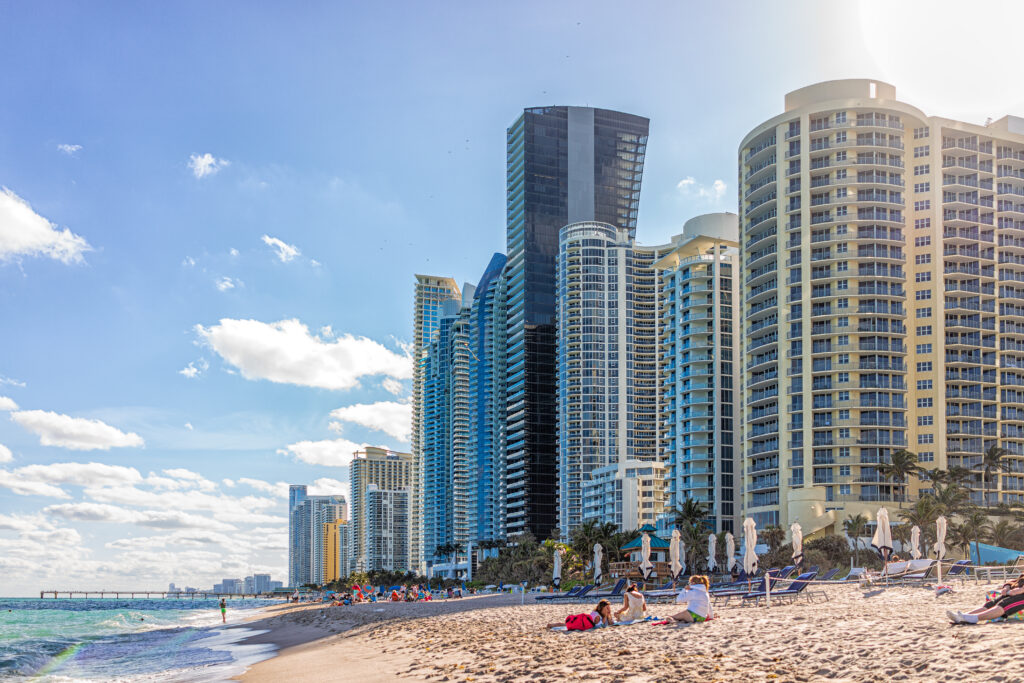By the Miami Herald Editorial Board
A recent report issued by the University of Miami certainly got our attention; no doubt we are not alone. It found 35 beachside towers along Miami-Dade’s barrier islands are sinking to an “unexpected extent.”
That’s a startling piece of news. South Florida, after all, is condo central. We’re already struggling with hefty condo assessments, and condo sale prices have dropped in some places. The idea of luxury high-rise buildings in places like Surfside, Bal Harbour, Miami Beach and Sunny Isles sinking into the ground is bound to raise eyebrows — and a lot of questions.
For one thing, it can’t help but summon up the specter of the Surfside condo collapse in 2021 that killed 98 people and became one of the deadliest structure failures in U.S. history.

Let’s be clear, though. There is no indication that the kind of sinking discussed in the UM report, called subsidence, played a role in the Surfside collapse. A final report on the cause of the collapse is expected next year. The tragedy did, however, focus worldwide attention on condos are built and sparked new state laws requiring construction reviews of older structures — sometimes resulting in those hefty condo assessments.
Let’s also be clear that the report doesn’t indicate any imminent danger to the buildings being studied. As the Miami Herald noted in stories this week and last, it’s unclear whether the subsidence in the 35 buildings named in the study — which included two Trump towers along with other big names — would have any effect on the structures UM looked at.
Some initial settlement of buildings is normal, and coastal structures are built to handle the harsh environment. “We do consider it to be fairly stable,” said John Pistorino, an engineer who has worked in Miami for five decades and sits on the state’s engineering board.
In general, as the Herald reported, subsidence doesn’t usually pose a risk. If different parts of a building sink unevenly, issues can occur — but the UM study didn’t seek to examine whether that took place. That’s something that needs another look.
The UM report used satellite imagery taken between 2016 and 2023 to measure subsidence, and found that some buildings sank between roughly 0.8 of an inch to just over three inches. A lot of buildings in central and northern Sunny Isles were affected — nearly 70%, to varying degrees.
The Sunny Isles Beach mayor told the Miami Herald that she is “100% confident that everything is safe.” Still, the city will do a review of the buildings, mainly to give residents peace of mind and answer any questions.
That’s a good idea. Because there are questions. About half of the buildings in the study were completed more than five years before the first satellite images were taken in 2016, yet they still sank. Pistorino noted that “all the settlement that was going to occur should have occurred by that time. So they should not have additional settlements.”
So why is this happening? The experts the Herald spoke with considered the possibility of buildings that are too heavy, too much construction packed on barrier islands, the effects of climate change and underground wells used for flood control.
It’s obvious that more study is going to be needed, and that we’ll need a relatively broad approach to the issue, not one building at a time; geology isn’t governed by a property line. As the report points out, we may not have a total grasp of what’s going on below the surface of land that includes sand and porous limestone. The makeup of the land also can vary greatly from one location to the next.
Developers, of course, drill into the ground to see what’s below the surface and build accordingly. But as we construct ever taller buildings on land that may be affected by things like underground wells, climate change and nearby construction — something the report mentioned — it seems prudent and practical to think more deeply about the changing properties of the ground beneath our buildings.
This opinion piece was originally published by the Miami Herald, which is a media partner of The Invading Sea. Banner photo: Development in Sunny Isles Beach (iStock image).
Sign up for The Invading Sea newsletter by visiting here. To support The Invading Sea, click here to make a donation. If you are interested in submitting an opinion piece to The Invading Sea, email Editor Nathan Crabbe at ncrabbe@fau.edu.



